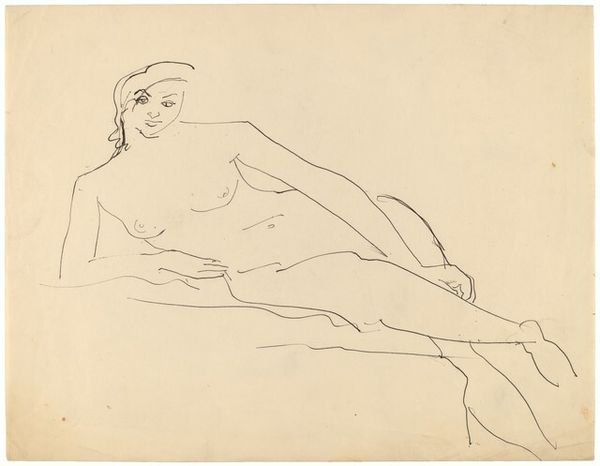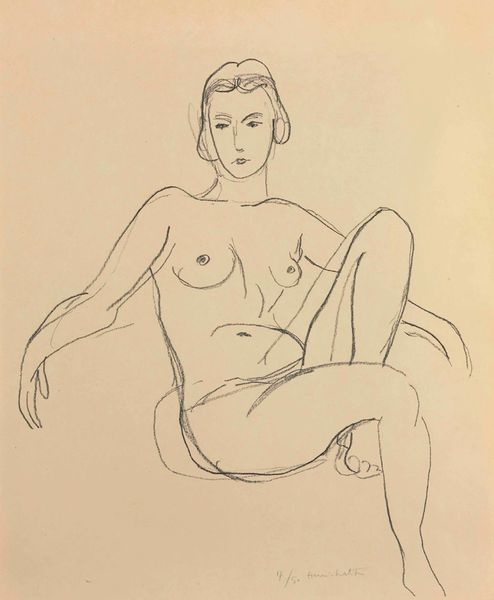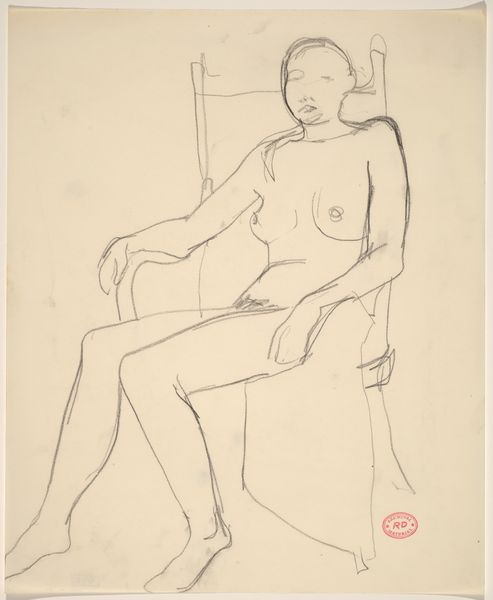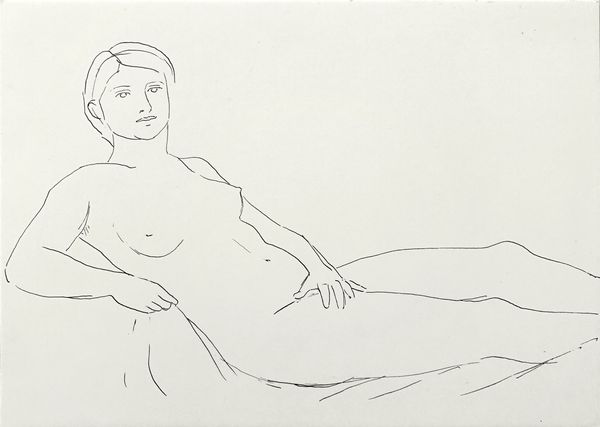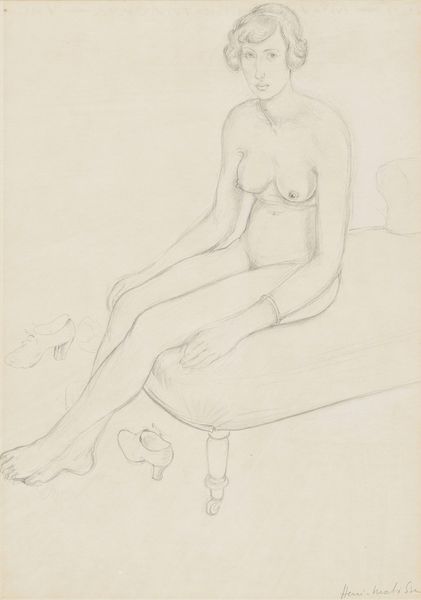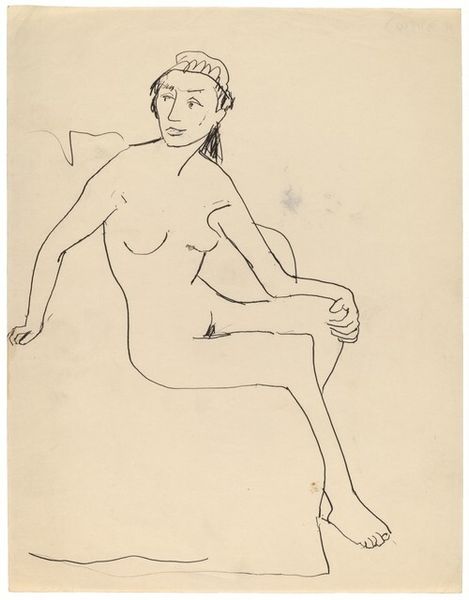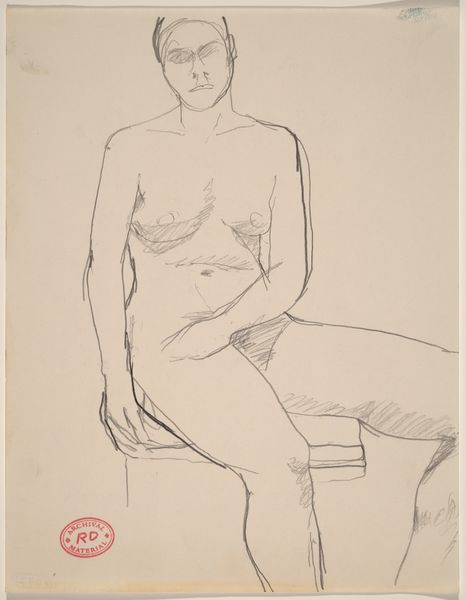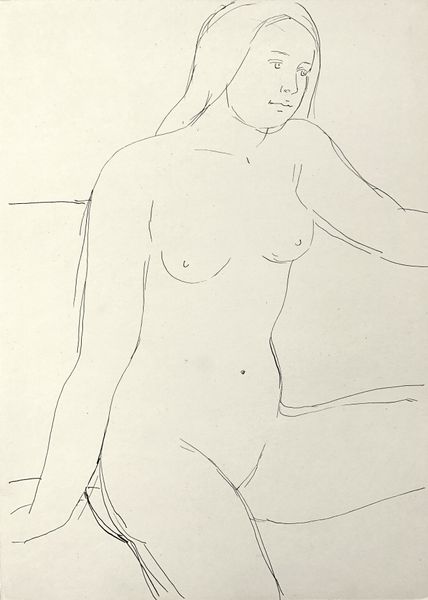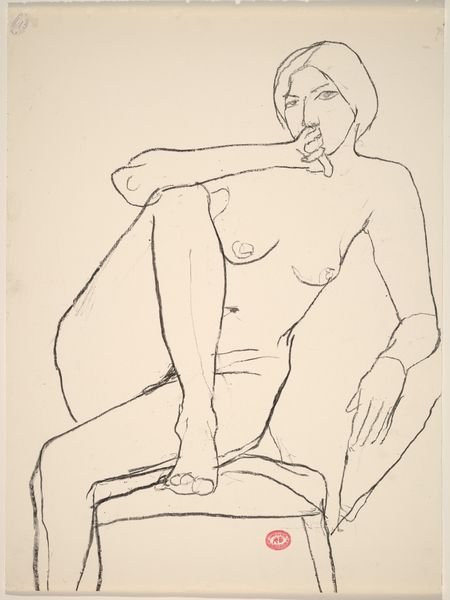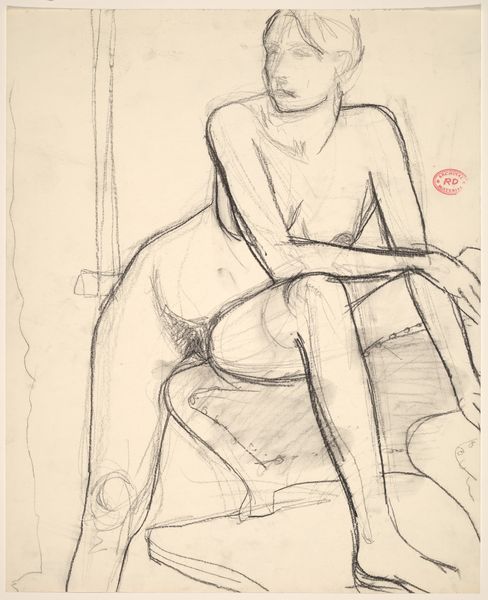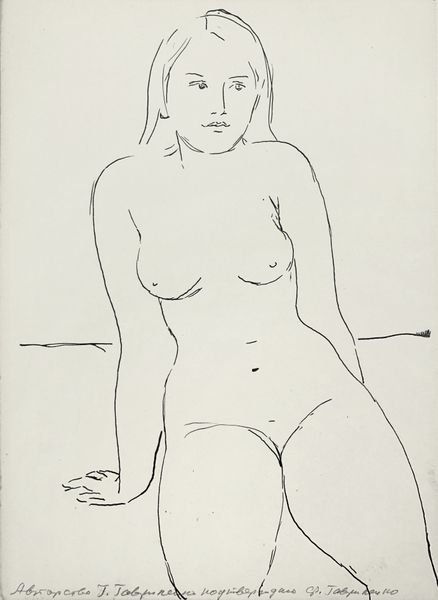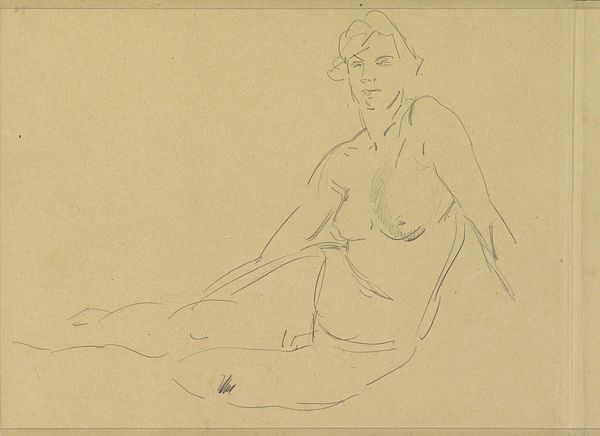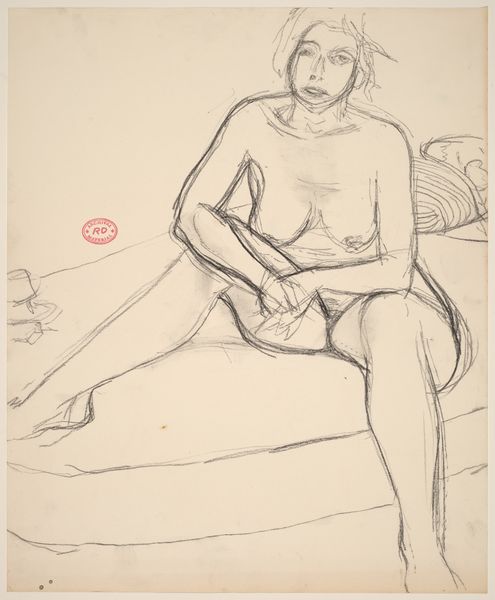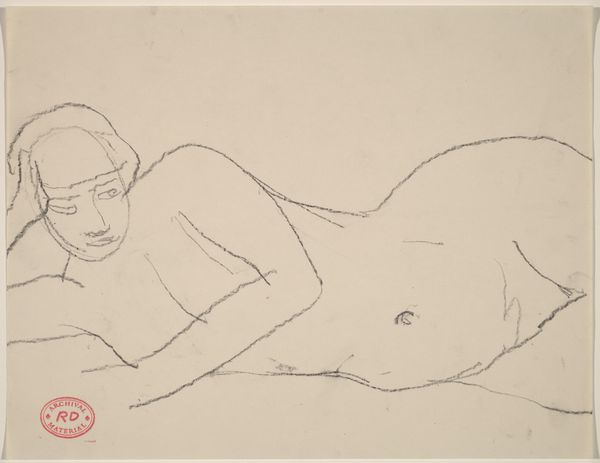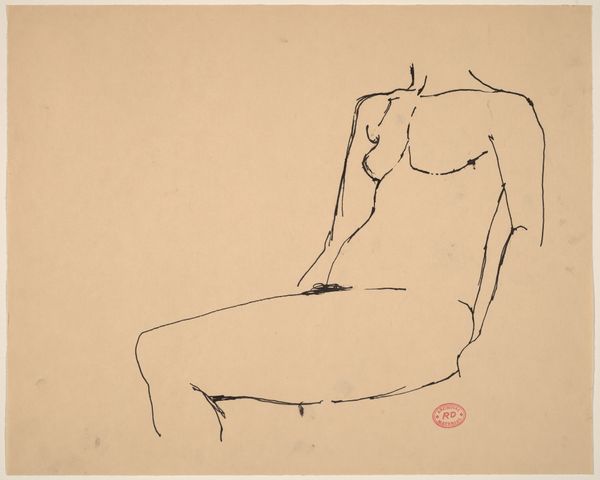
drawing, painting, watercolor
#
portrait
#
drawing
#
painting
#
figuration
#
watercolor
#
genre-painting
#
nude
Dimensions: sheet: 27.94 × 35.56 cm (11 × 14 in.)
Copyright: National Gallery of Art: CC0 1.0
Editor: This watercolor by Rudy Burckhardt, "Nude on an Empire Sofa," from around the 1970s, is so intriguing. The woman’s gaze is direct and the chaise lounge almost feels too grand for the loose, free style. How do you interpret this work, especially thinking about its place in art history? Curator: It's interesting to consider this work through the lens of accessibility and representation. The Empire sofa, a symbol of wealth and power, is juxtaposed with the unidealized nude figure. How might this pairing comment on the traditional power dynamics within art, and who gets to be depicted, and how? Editor: I hadn’t thought about that specifically. The sort of casual depiction definitely counters the traditional 'ideal' nude of earlier eras. Curator: Exactly! Burckhardt, known for his street photography, often focused on the everyday. Do you see how this painting challenges the elitism often associated with both nudes in art and luxurious settings? Perhaps he is democratizing the subject, removing it from the exclusive realm of idealized beauty. Editor: I see what you mean. Placing the figure in a more ‘ordinary’ context diminishes the traditional… drama, I guess. Curator: Precisely. It raises questions about the ownership of imagery and the political act of simply portraying a nude figure in a non-conventional way. It pushes the boundary of what is considered acceptable or beautiful within the socio-political art landscape. Editor: So, by presenting something so "ordinary" against the expected backdrop, he creates this subtle but effective statement? Curator: Precisely. This work underscores the evolving social narrative surrounding representation and beauty within art, challenging conventional ideals and broadening the scope of what is considered worthy of portrayal. Editor: That's a very insightful way to see it! I'll definitely consider this when viewing other similar pieces in the future. Curator: It highlights how much historical and social context can impact the perception and importance of a work, and how art can function as both reflection and driver for cultural change.
Comments
No comments
Be the first to comment and join the conversation on the ultimate creative platform.
